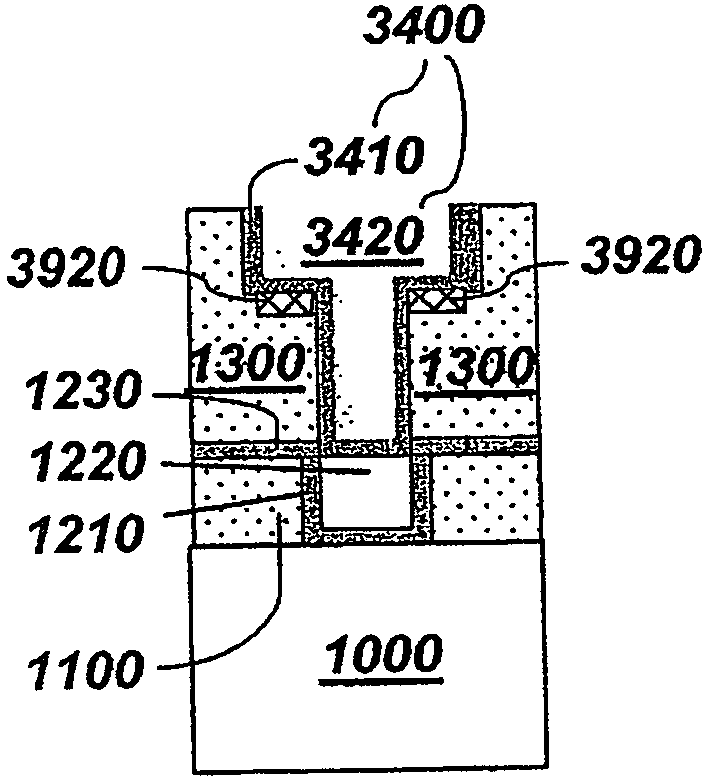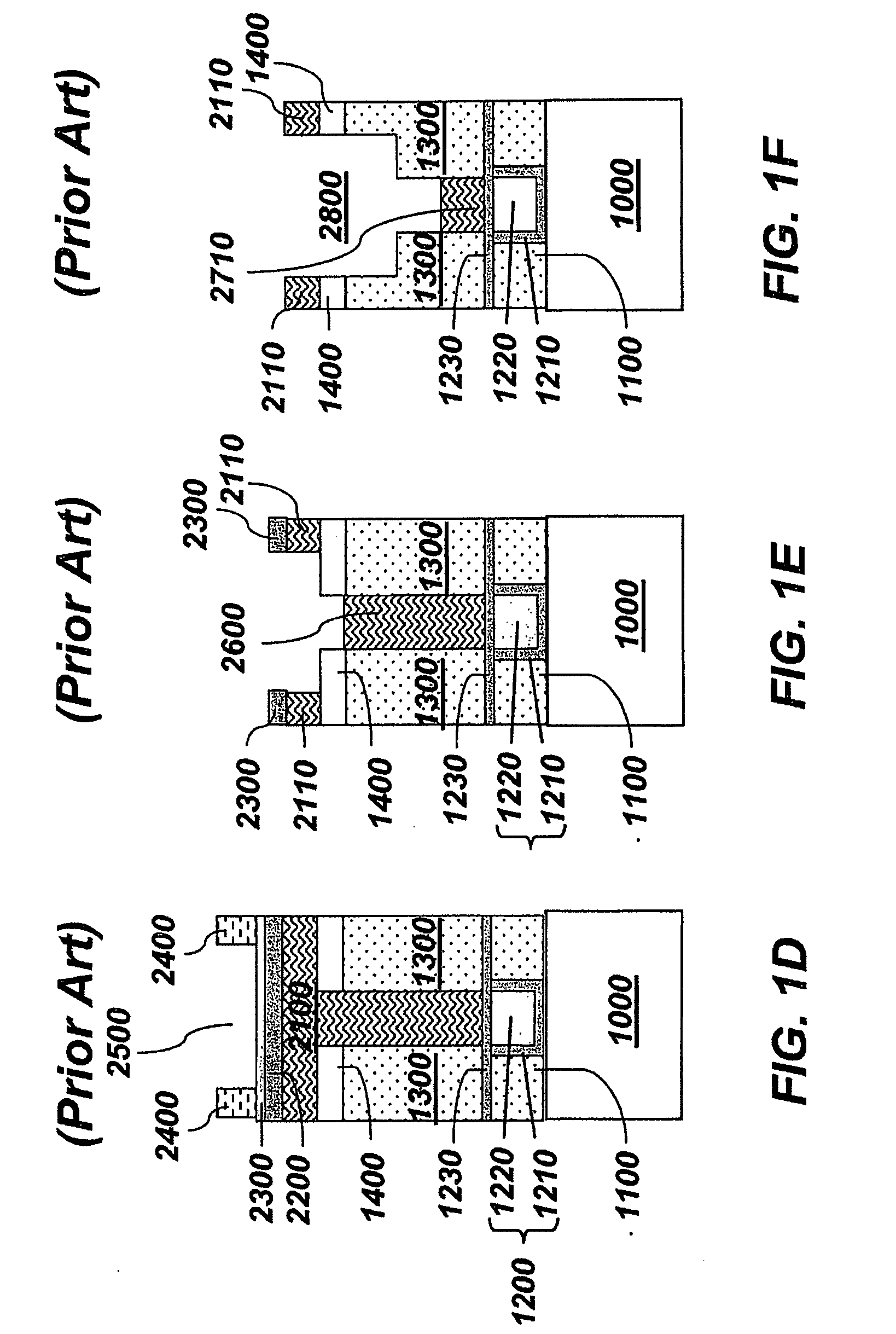Methods to mitigate plasma damage in organosilicate dielectrics using a protective sidewall spacer
a technology of organosilicate dielectrics and sidewalls, which is applied in the direction of semiconductor devices, semiconductor/solid-state device details, electrical apparatus, etc., can solve the problems of increasing the width of the line trench, the overall speed of the advanced semiconductor chip approaching a limit, and the increase of the line width of the trench, so as to reduce the increase of the line width of the metal trench, the effect of plasma damage reduction
- Summary
- Abstract
- Description
- Claims
- Application Information
AI Technical Summary
Benefits of technology
Problems solved by technology
Method used
Image
Examples
embodiment 1
Use of a Protective Spacer
[0101]In embodiment 1, or the first embodiment, of the present invention, the integration sequence including the dual damascene etch and the plasma strip process described in FIGS. 1A-1I and accompanying paragraphs is interrupted after the patterning of the line trench 2800 in the second intermetal dielectric (IMD) layer 1300 and prior to removal of the patterned disposable material layer 2110 and the disposable via fill plug 2710. In other words, the prior art dual damascene process sequence described in FIGS. 1A-1F and accompanying paragraphs above are employed. For the sake of clarity, the prior art metal interconnect structure of FIG. 1F is reproduced as FIG. 2A with the same reference numerals. Thus, the first exemplary metal interconnect structure according to the first embodiment of the present invention shown in FIG. 2A is substantially the same as the prior art structure of FIG. 1F, and may be derived by the same processing steps known in the art.
[...
embodiment 2
Use of a Protective Spacer and Densification of a Trench Bottom Region
[0116]In embodiment 2, or the second embodiment, of the present invention, the integration sequence of the first embodiment is employed up to the step corresponding to fabrication of the metal interconnect structure shown in FIG. 2C. For the sake of clarity, the metal interconnect structure of FIG. 2C is reproduced as FIG. 3A with the same reference numerals. Thus, the second exemplary metal interconnect structure according to the second embodiment of the present invention shown in FIG. 3A is substantially the same as the first exemplary metal interconnect structure of FIG. 2C, and may be derived by the same processing steps disclosed above.
[0117]Referring to FIG. 3B, a near surface region of the second IMD layer 1300 located near the bottom surface of the line trench 2800 is subjected to a densification process that renders the near surface region more robust against damaging effects of plasma in a subsequent pla...
PUM
 Login to View More
Login to View More Abstract
Description
Claims
Application Information
 Login to View More
Login to View More - R&D
- Intellectual Property
- Life Sciences
- Materials
- Tech Scout
- Unparalleled Data Quality
- Higher Quality Content
- 60% Fewer Hallucinations
Browse by: Latest US Patents, China's latest patents, Technical Efficacy Thesaurus, Application Domain, Technology Topic, Popular Technical Reports.
© 2025 PatSnap. All rights reserved.Legal|Privacy policy|Modern Slavery Act Transparency Statement|Sitemap|About US| Contact US: help@patsnap.com



